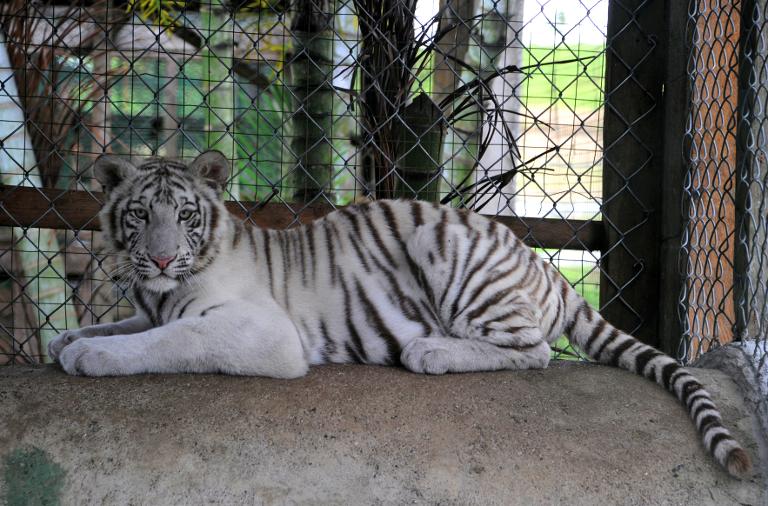
From drug estate to animal sanctuary: Honduras's reborn zoo
The six-month-old, black-spotted feline jumps from one cage to another, and welcomes her admirers by crashing into the bars of her enclosure.
She is among 500 animals at the Joya Grande sanctuary in Honduras, recently taken over by the government from one of the country's top drug cartels, which financed the land with illicit funds from the international narcotics trade.
Kenia's fame is rivaled perhaps only by anteater Atractivo, whose father Frank was the first animal the zoo bought after confiscating the property from the notorious Los Cachiros gang in 2013.
Kenia and Atractivo are now the zoo's mascots, drawing crowds to the sanctuary 200 kilometers (124 miles) north of Tegucigalpa in the department of Cortes.
The land was one of more than about 60 properties taken from the drug lords, along with more than 20 vehicles and various businesses.
It was allegedly modeled after the property of one of Latin America's most notorious kingpins, Colombia's Pablo Escobar, who kept his own exotic animals on a luxurious 3,000-hectare (7,400-acre) estate called "Hacienda Napoles."
- Drug money for animals -
The Cachiros financed their own version of Escobar's "Hacienda" with the money they made exporting drugs from Honduras.
The gang used to control 90 percent of clandestine airstrips in Honduras, and is accused of moving large quantities of drugs to Mexican cartels.
In May 2013, the US government slapped sanctions on the group for their suspected drug trafficking.
Now Joya Grande -- a relatively modest 20-hectare park -- is home to some 59 different species.
It is funded entirely by entrance fees that pay for the $82,000 needed to cover monthly costs by charging visitors $11 per ticket.
One of those visitors, Martha Midence, said seeing the different species is the real draw -- for both her and her children.
"I love the kinds of animals there. The giraffe, lions, tigers... are all well-kept, and don't look sad, some are playful and excited to see people," said Midence, accompanying a school trip with her daughter.
For zoo keeper Maria Diaz, the sanctuary is not only a symbolic win against Honduras's dangerous drug lords, but a chance to educate the public about the animals and the importance of conservation.
Her goal is to boost "the interests of Hondurans, so they to appreciate the species," she said.
About 700 people come to the zoo every weekend, eager to ogle Big Boy the giraffe, Bombocita the hippopotamus, not to mention the African lions, Bengali tigers, pumas, camels, zebras and ostrich.

Legal Disclaimer:
MENAFN provides the
information “as is” without warranty of any kind. We do not accept
any responsibility or liability for the accuracy, content, images,
videos, licenses, completeness, legality, or reliability of the information
contained in this article. If you have any complaints or copyright
issues related to this article, kindly contact the provider above.


















Comments
No comment